Your experience level and specific needs are crucial factors when selecting a telescope. Whether you’re a beginner or an experienced astronomer, understanding the three main types of telescopes—refractor, reflector, and compound—will help you make an informed decision. Each type offers unique advantages that cater to different stargazing preferences and requirements.
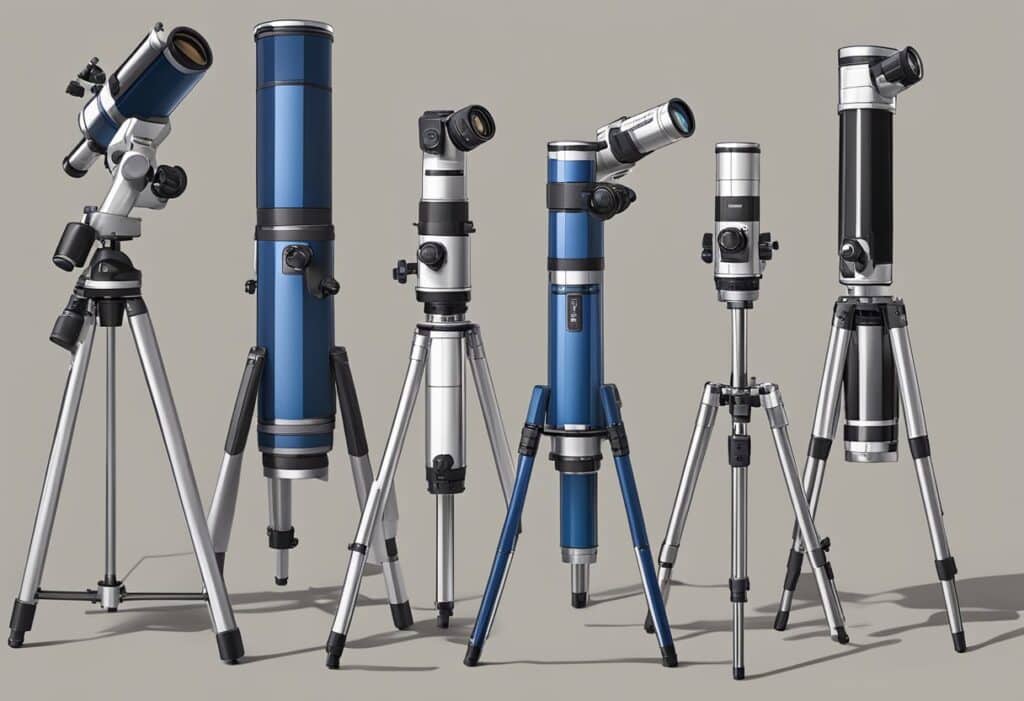
Understanding Telescope Types
Choosing the right telescope involves weighing the pros and cons of each type: refractor, reflector, and compound. Each type has unique characteristics impacting its usability and performance in different scenarios.
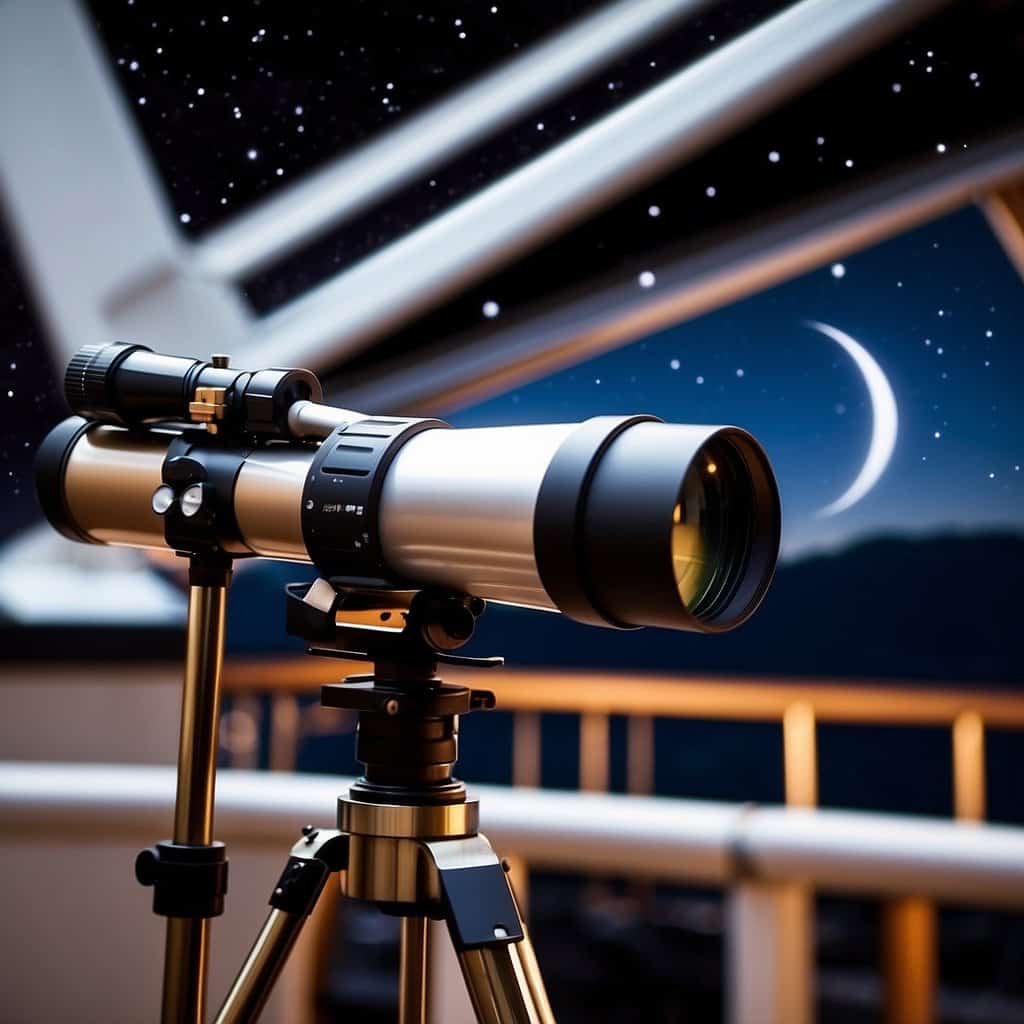
Refractor Telescopes
Refractor telescopes use lenses to gather and focus light. These lenses are typically made of glass and are positioned at either end of the telescope tube.
Advantages:
- Excellent for viewing planets and the moon.
- Provide sharp and high-contrast images.
- Low maintenance due to sealed tubes that keep dust and moisture out.
Disadvantages:
- Generally, it is more expensive per inch of aperture than other types.
- It can become heavy as the aperture size increases.
- Suffer from a chromatic aberration in cheaper models, which causes colour fringing around bright objects.
Refractors are ideal if you value simple operation and high-quality images, particularly for lunar and planetary viewing.

Reflector Telescopes
Reflector telescopes use mirrors, not lenses, to gather and concentrate light. The primary mirror is usually parabolic to achieve more accurate light focusing.
Advantages:
- More affordable per inch of aperture, allowing for larger apertures within the same budget.
- Eliminate chromatic aberration, providing true-color images.
- Typically, it is lighter and more portable compared to large refractors.
Disadvantages:
- The open tube design requires more maintenance to keep mirrors clean and align (collimate) with them.
- Mirrors can degrade over time and may require recoating.
- It is less suitable for terrestrial viewing due to image inversion.
Reflectors are a good choice if you’re looking for an affordable option with large apertures and you are comfortable with occasional maintenance.

Compound Telescopes
Compound telescopes, also referred to as catadioptric telescopes, utilize both lenses and mirrors to correct optical errors and reduce the length of the optical path.
Advantages:
- Highly versatile and suitable for both celestial and terrestrial viewing.
- They are collimated less frequently than reflectors.
- They are generally more compact and portable due to their folded optical design.
Disadvantages:
- It is more expensive than comparable refractors and reflectors.
- It can have slight image distortions and light loss due to multiple optical surfaces.
- Heavier than reflectors for the same aperture due to additional components.
Compound telescopes balance the strengths of refractors and reflectors, making them great for those who want an all-purpose scope.

Choosing A Telescope Based on Experience Level
Selecting a telescope should align with your astronomy experience. Beginner astronomers may need more straightforward options, while intermediate users can handle more complexity. Advanced astronomers might crave high-end features for detailed observations.
Beginner Recommendations
For those new to astronomy, ease of use and affordability are key. Refractor telescopes are an ideal starting point. They are durable with simple designs, making them easy to set up and maintain. A model with a 70 mm or larger aperture provides clear views of the moon and planets.
Dobsonian telescopes, a type of reflector telescope with a simple mount, are another excellent choice. They offer ample aperture at reasonable prices and enhance the ability to see faint objects. Consider a 4 to 6-inch diameter for a balance of performance and cost.
Intermediate Considerations
Intermediate astronomers often seek better image quality and more features. Reflector telescopes with a larger aperture, around 8 inches or more, allow detailed views of deep-sky objects like galaxies and nebulae. These telescopes offer great value and powerful capabilities. Equatorial mounts can be beneficial for accurate tracking of celestial objects. Intermediate users might also explore compound telescopes (Schmidt-Cassegrain or Maksutov-Cassegrain) for their compact designs and versatility. These telescopes combine the benefits of refractors and reflectors, providing excellent optics and portability.
Advanced Preferences
Advanced astronomers look for high precision and maximum control. Large aperture reflectors or advanced compound telescopes with 10 inches or more offer the ability to see very faint celestial objects. These telescopes often come with computerized mounts for automated tracking and object finding.
Investing in high-quality eyepieces and additional accessories, like motorized mounts, enhances the observing experience. Imaging capabilities, such as those available with apochromatic refractors, are often essential for advanced users interested in astrophotography.
The more serious observers would want to consider models with a robust build and high-end optics to get the best possible night sky view.
Telescope Suggestions
Exploring the right telescope involves balancing various features such as portability, storage, and ease of use. Knowing these details can guide you towards a telescope that enhances your stargazing experience, fitting both your observational goals and practical considerations.
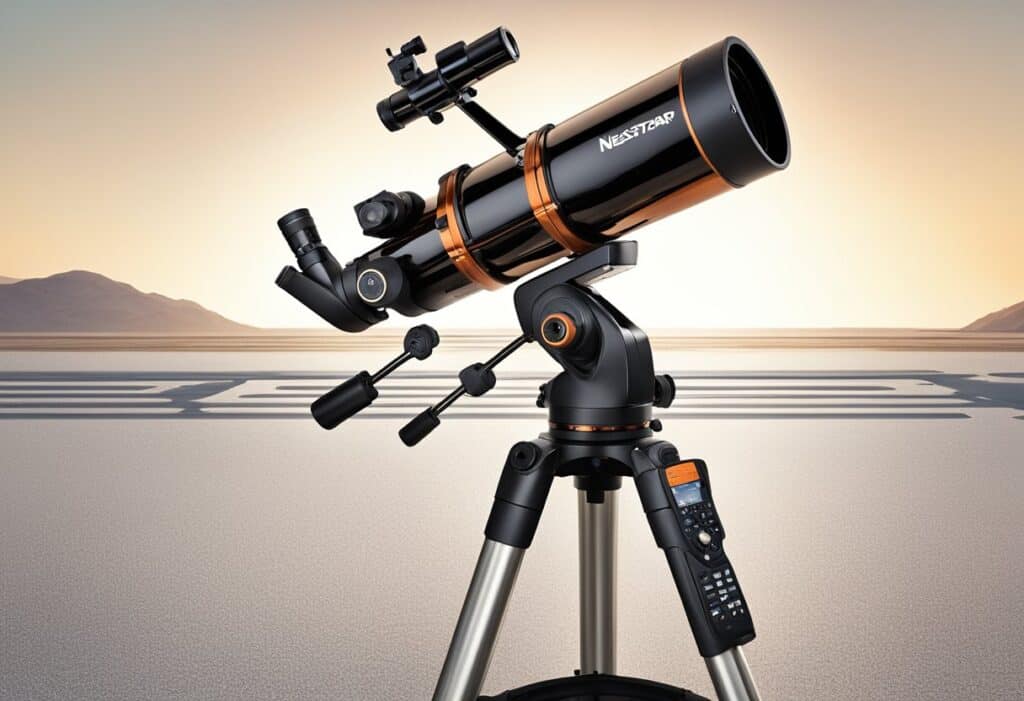
1. Celestron NexStar 8SE
The Celestron NexStar 8SE is one of the most famous telescopes for beginners and experienced stargazers. It features an 8-inch Schmidt-Cassegrain design, which offers a blend of a large aperture and compact size.
The telescope’s focal length is 2,032mm, giving you a focal ratio of f/10. This setup is excellent for observing planets, galaxies, and nebulae.
The 8SE comes with a computerized GoTo mount, making it easier for you to locate celestial objects. The system includes a hand controller with a database of over 40,000 objects, streamlining your stargazing experience.
One of the best features is its portability. Despite its advanced features, it fits into a compact orange tube that weighs just 11kg, making it relatively easy to transport and set up.
For those interested in astrophotography, the NexStar 8SE offers good performance. Its 8-inch aperture allows you to capture detailed images. Just be mindful of light pollution, as it can affect the light-gathering capability.
Whether you’re a beginner or looking to upgrade, the Celestron NexStar 8SE offers a potent combination of advanced optics and user-friendly features. For more details, visit the Big Bang optics review or check out its computerized features.
Alternatively, Amazon offers the Gskyer Telescope 600x90mm AZ Astronomical Refractor Telescope.
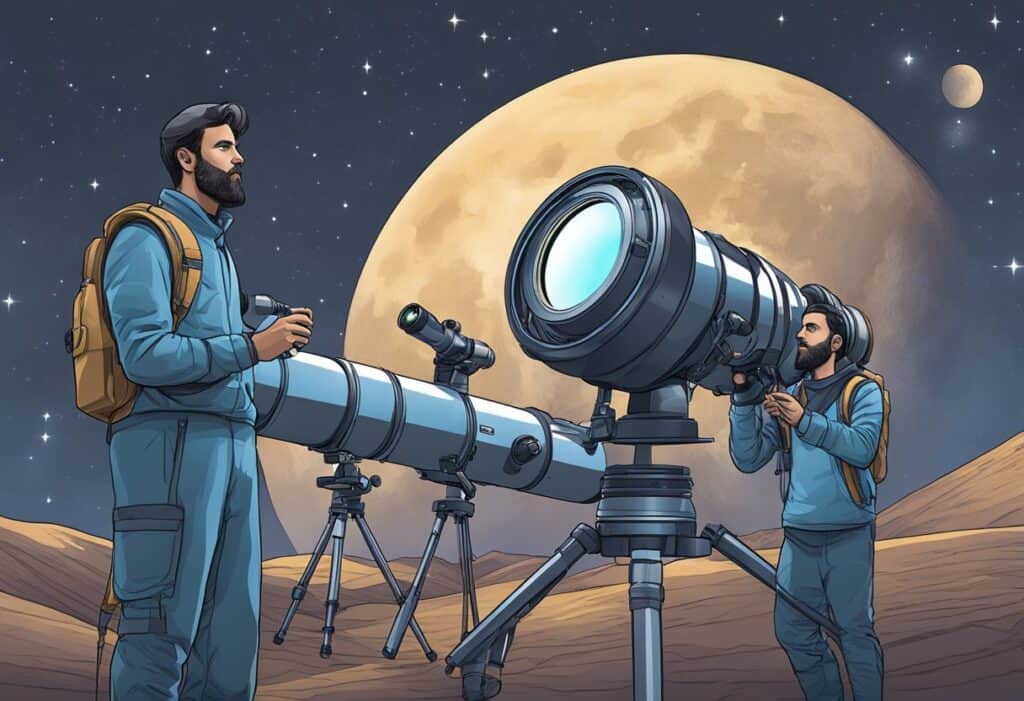
2. Orion SkyQuest XT10
The Orion SkyQuest XT10 is a popular choice for amateur astronomers. This 10-inch Dobsonian telescope boasts a large aperture, providing bright and clear views of celestial objects. Its simple design makes it accessible, whether you’re new to stargazing or have some experience.
The XT10 features a parabolic primary mirror with enhanced reflective coatings, improving image quality. The 25mm Plossl eyepiece included offers good magnification and clarity. You will appreciate the sturdy 2-inch Crayford focuser, which holds eyepieces securely without wobbling.
Setting up is straightforward, as the XT10’s design prioritizes ease of use. Maneuvering may require more space and effort than smaller models, but the enhanced viewing experience is worth it. It is built with low thermal expansion borosilicate glass, ensuring stable performance in varying temperatures.
Consider the Orion SkyQuest XT10 if you’re looking for a telescope that balances affordability and high performance. This model provides exceptional light-gathering power, making it ideal for viewing distant galaxies and nebulae. For more details, you can check out its features here.
Alternatively, Amazon offers the Hexium 130EQ Astronomical Reflector Telescope.
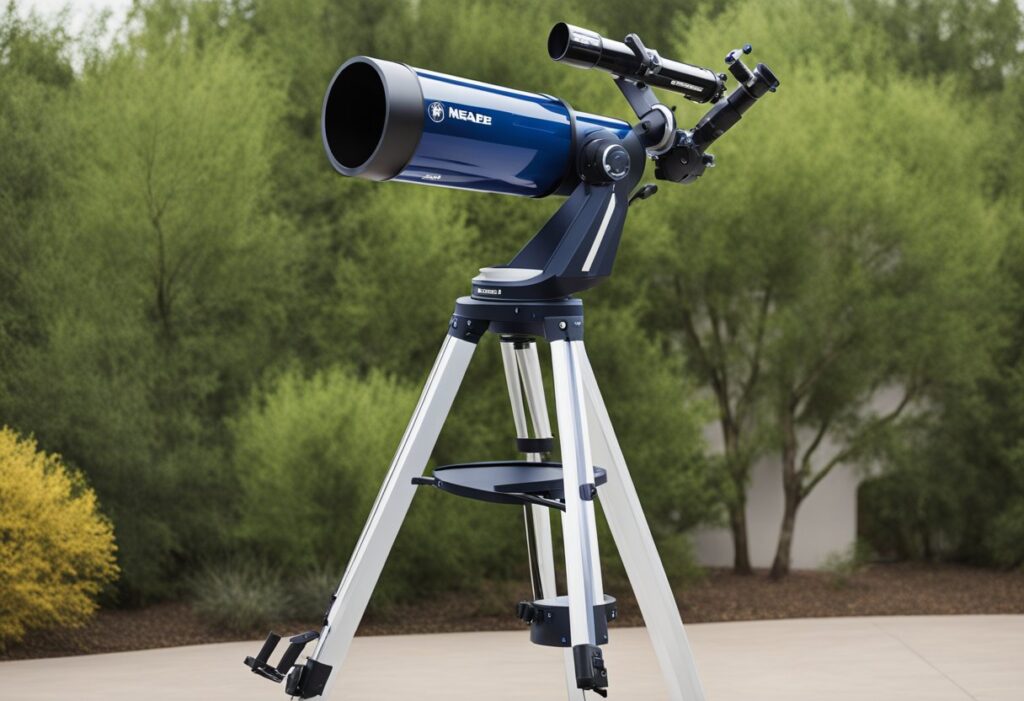
3. Meade LX90 ACF
If you want a versatile and powerful telescope, consider the Meade LX90 ACF. It features an 8-inch aperture with advanced coma-free (ACF) optics to produce precise, sharp images with reduced distortion.
The telescope is designed with a focal length of 2000mm and a focal ratio of f/10. This configuration is ideal for both visual observations and planetary imaging. It also has a built-in GPS, making aligning and tracking celestial objects easier.
An essential aspect of the Meade LX90 ACF is its GoTo mount. This computerized feature lets you quickly locate thousands of objects in the night sky and track them. Whether a beginner or an experienced stargazer, you can benefit from its user-friendly interface.
The telescope includes a 26mm eyepiece, which enhances your viewing experience by providing precise and magnified views. If you’re seeking a reliable, long-term investment for stargazing, the Meade LX90 ACF stands out as a strong candidate. It can meet various needs, making it popular among amateur astronomers.
Refer to user experiences and reviews at Cloudy Nights and Ameripse USA for more detailed discussions of its performance and potential issues.
Alternatively, Amazon offers the Maksutov-Cassegrain Telescopes, 80mm Aperture 850mm Catadioptric Compound Telescope.
Final Thoughts
Choosing between a refractor, reflector, or compound telescope for star gazing depends on your experience and stargazing preferences. Beginners may find refractor telescopes or Dobsonian reflectors ideal for their simplicity and affordability. At the same time, intermediate users may seek larger aperture reflectors or compound telescopes for better image quality and versatility. Advanced astronomers may prefer high precision and maximum control offered by large aperture reflectors or advanced compound telescopes with computerized mounts. Ultimately, understanding the characteristics of each type and considering practical factors such as portability and storage will guide you toward a telescope that enhances your stargazing experience.
Frequently Asked Questions
What are the key differences between refractor, reflector, and compound telescopes?
Refractor telescopes use lenses to gather and focus light, reflector telescopes use mirrors, and compound telescopes combine lenses and mirrors.
Which telescope model is recommended for astrophotography and capturing detailed images of celestial objects?
Telescopes with advanced optics and imaging capabilities, such as apochromatic refractors or certain compound telescopes, are often recommended for astrophotography and capturing detailed images of celestial objects.
What are the advantages and disadvantages of reflector telescopes compared to refractor and compound telescopes?
Reflector telescopes are more affordable per inch of aperture, eliminate chromatic aberration, and are lighter and more portable than large refractors. However, they require more maintenance to keep mirrors clean and aligned and may not be suitable for terrestrial viewing due to image inversion.






